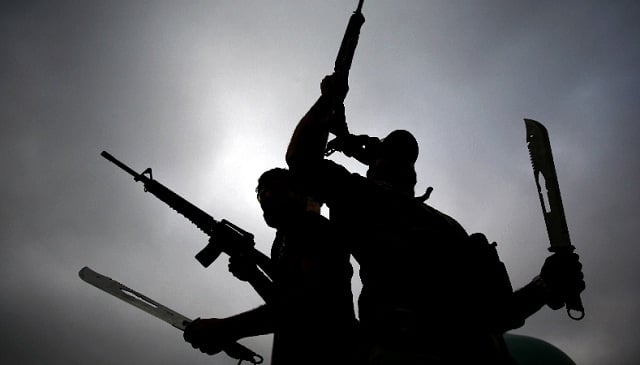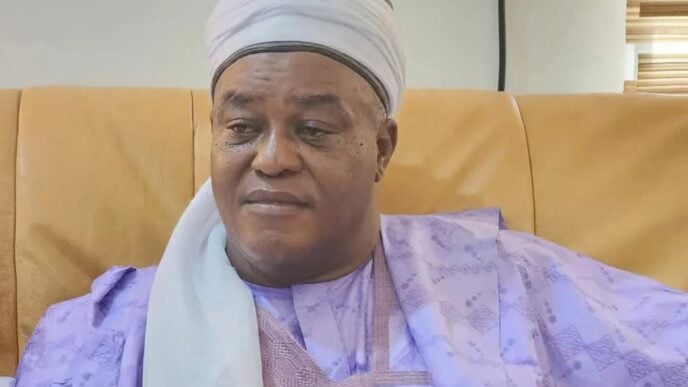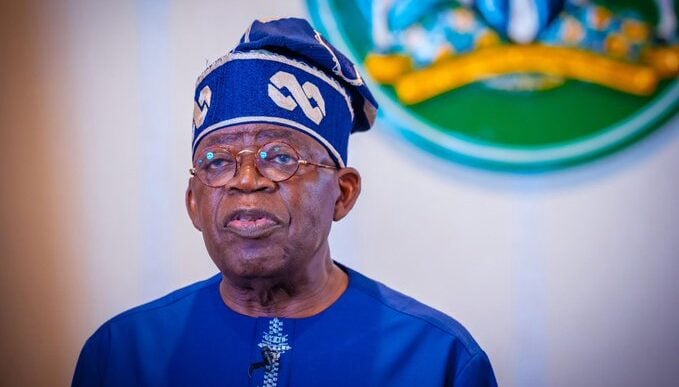Talks of a Christian genocide in Nigeria have flooded the internet in recent months. Much of the conversation centres on claims that authorities are deliberately ignoring the said genocide. These claims have largely been peddled by foreign lawmakers, international media outlets, and local secessionist groups.
Attempts by prominent figures, including President Bola Tinubu, Pietro Parolin, Vatican secretary of state, and Massad Boulos, senior adviser to US President Donald Trump for Arab and African affairs, to clarify that the word “genocide” exaggerates Nigeria’s complex insecurity have drawn criticism of downplaying the situation.
The opposing figures insist that there is an ongoing genocide in Nigeria, which deserves an imposition of sanctions as a country of particular concern (CPC).
The stance has further polarised an already fragmented society, but there is also sharp debate and, perhaps, a misunderstanding about what a genocide entails.
Advertisement
TheCable breaks it down in this explainer.
WHAT DEFINES A GENOCIDE?
The United Nations (UN) Genocide Convention defines “genocide” as any act committed with the intent to destroy, in whole or in part, a national, ethnical, racial, or religious group.
Advertisement
The acts spelt out by the convention as being genocidal include killing members of the group; causing serious bodily or mental harm to members of the group; deliberately inflicting on the group conditions of life calculated to bring about its physical destruction in whole or in part; imposing measures intended to prevent births within the group; and forcibly transferring children of the group to another group.
The law came into existence after the Second World War, following the Holocaust, during which Nazi Germany systematically killed more than six million Jewish people. The UN said the Genocide Convention was necessary to liberate mankind from such an odious scourge.
About 153 countries, including Nigeria, have ratified the law to prevent and punish the crime of genocide.
GENOCIDE VS ARMED CONFLICT
Advertisement

Armed conflict, the term frequently used by the state to describe Nigeria’s insecurity challenge, is a political conflict involving citizens fighting for internal change. According to the European Union (EU), it is said to exist when there is an armed confrontation between governmental authorities and organised armed groups or between such groups within a state.
Some of these armed groups are secessionist movements, generally spearheaded by a group of people, more often than not a minority within a community, who take up arms to fight for the establishment of either an autonomous entity within an existing state or an entirely new and independent state of their own.
In comparison with a genocide, these are fundamentally different concepts, though they can sometimes be related or overlap in conflict situations.
The UN Office on Genocide Prevention and the Responsibility to Protect notes that a genocide may take place in the context of an armed conflict, international or non-international, but also in the context of a peaceful situation.
Advertisement
To constitute genocide, according to the multilateral organisation, there must be a proven intent on the part of perpetrators to physically destroy one of the four protected groups under the Convention. This is the most difficult element to determine.
As such, the UN office advises that such a conclusion can only be made “following a careful and detailed examination of the facts against relevant legislation”.
Advertisement
“This must be done by a competent international or national court of law with the jurisdiction to try such cases,” the body says in a guidance note on when to refer to a situation as a genocide.
So far, no national or international court has officially declared that genocide has ever occurred in Nigeria.
Advertisement
IDENTIFYING A GENOCIDE
There are 10 stages of a genocide, according to Gregory Stanton, a research professor in genocide studies and prevention at the Institute for Conflict Analysis and Resolution and president of Genocide Watch.
Advertisement
Classification is the first stage, where people are divided into ‘them’ and ‘us’. Then comes symbolisation, where groups are forced to wear or be associated with symbols which identify them as different.
Discrimination comes in third place. Here, groups are excluded from participating in civil society, such as by excluding them from voting or certain places. In Nazi Germany, for example, Jews were not allowed to sit on certain park benches. Dehumanisation is the fourth stage, where the humanity of one group is denied and, instead, associated with animals or diseases in order to belittle them.
The fifth stage is organisation where police or army units are trained and provided with weapons and knowledge in order to persecute a group in the future. After that comes polarisation — using propaganda to polarise, create distance, and exclude a group further.
Preparation is the seventh step. This is the planning of mass murder and identifying specific victims. Afterwards, persecution. Persecution is defined in this context as incarcerating groups in ghettos or concentration camps, forcibly displacing groups, and expropriating property, belongings, or wealth.
Stanton ranked extermination — committing mass murder — as the eighth step. The final step is denial. This does not necessarily mean denying that the acts of murder happened, but rather that the actors deny that these acts were a crime and were, in fact, justified.
‘TUTSIS, ARMENIANS, JEWS’ — SOME UNFORGETTABLE GENOCIDES IN HISTORY
Between April 7, 1994, and July 15 of the same year, an estimated 800,000 to 1 million Tutsi people were killed in Rwanda.
The genocide was carried out by extremist Hutu-led army officers and militias after the assassination of Rwandan President Juvénal Habyarimana, a Hutu, when his plane was shot down on April 6, 1994.
This event unleashed pre-planned mass killings targeting Tutsis and political opponents. Roadblocks and identity checks were used to identify victims, who were then subjected to brutal massacres often carried out with machetes and other crude weapons. Women faced systematic rape, with an estimated 250,000 Tutsi women raped, many later contracting HIV.
The genocide ended when the Tutsi-dominated Rwandan Patriotic Front (RPF), led by President Paul Kagame, took control of the country in July 1994, forcing the genocidal government to flee.
It remains one of the most brutal genocides in history and is commemorated every year on April 7.
The Armenian Genocide began in 1915 under the leadership of the Ottoman government. Starting on April 24, 1915, about 250 Armenian intellectuals were arrested in Constantinople (now Istanbul) by Ottoman authorities, who later began a systematic campaign to eliminate the Armenian population.
Over 1 million Armenians, many of whom were Christians, were killed through mass executions, forced death marches to the Syrian desert, starvation, and other brutal means. Many women and children were forcibly converted to Islam, subjected to rape, or sold into slavery.
The genocide was motivated by ethno-religious nationalism and a fear among Ottoman leaders that Armenians would support Russia, the Ottoman Empire’s enemy. Survivors were sent to concentration camps under dire conditions.
April 24 is observed internationally as Armenian Genocide Remembrance Day.
It is impossible to speak of genocides without referencing the Holocaust. It was the horrifying event that triggered the UN Genocide Convention.
Between 1933 and 1945, during the Second World War, the Nazis sought to eliminate the entire Jewish community of Europe. Jews were murdered by death squads or transported to extermination camps. No fewer than six million of the 11 million Jews in Europe perished.
The genocidal hatred was central to Nazi ideology, promoted by Adolf Hitler and the Nazi Party as part of a broader belief in racial purity and a false portrayal of Jews as the racial and ideological enemy responsible for Germany’s social, economic, and political problems at the time.
The UN-designated commemoration date is January 27.
HAS THERE, PERHAPS, BEEN A GENOCIDE IN NIGERIA?
The closest event recognised by many as a genocide in Nigeria was the civil war, which lasted from 1967 to 1970.
Also known as the Biafran War, it was an armed conflict fought between Nigeria and the Republic of Biafra, a secessionist state, which had declared its independence from the country in 1967.
Estimates suggest over one million Igbo people, who primarily make up the eastern region where the war was fought, died from famine caused by a blockade that cut off food supplies to the secessionist state. The blockade was imposed by the Nigerian government.
Though there was a large scale of deaths, scholars have debated the question of the conflict, termed a genocide.
They argued that there is insufficient evidence that the government’s main objective was deliberate extermination of a group rather than defeating a secessionist movement, which is characterised as an armed conflict.
Whatever the case may be, the country has yet to experience another conflict that matches the Biafran war in scale, intensity, or human cost, making it worrying that the term “genocide” is now loosely used to describe more recent, though severe, episodes of violence.












